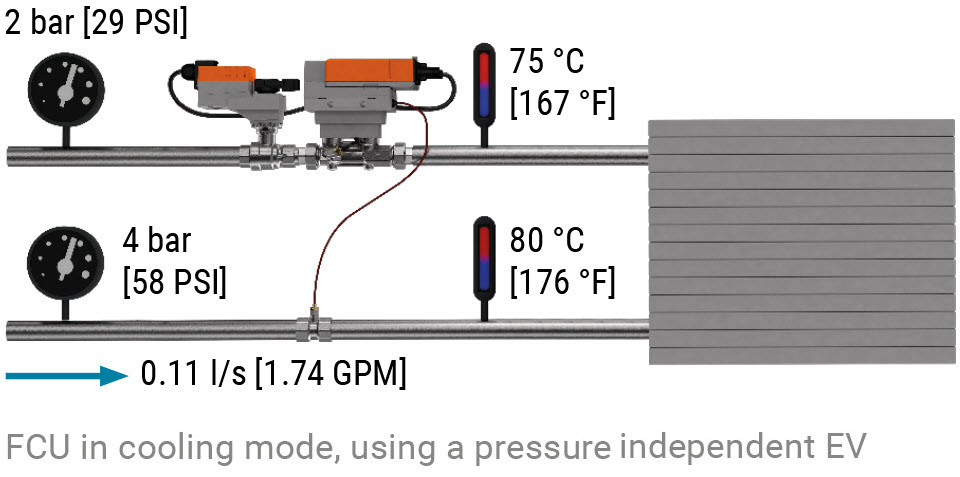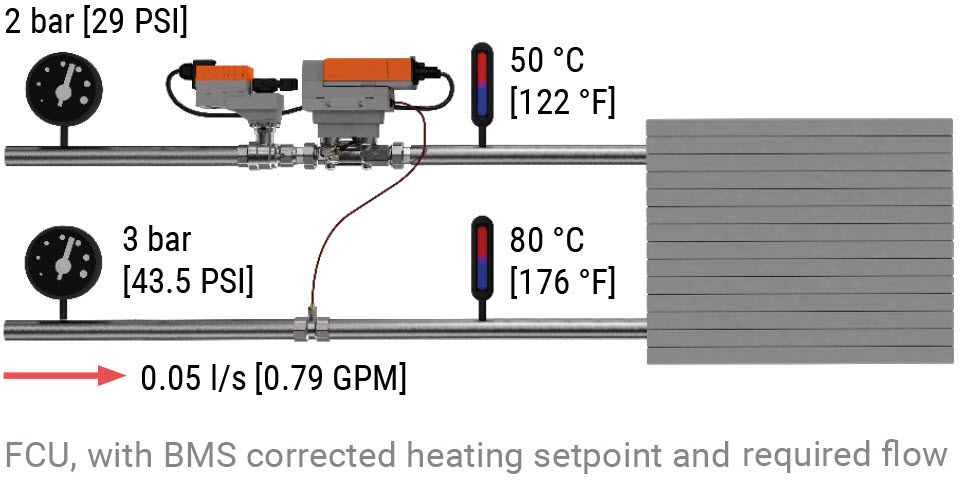

Belimo Energy Valve™ in Two Pipe Change Over
O que é uma transição de dois tubos (TPCO)?
Sistemas de transição de dois tubos (TPCO) são normalmente usados onde é muito caro passar conjuntos duplos de tubos para cada consumidor ou é esperado que haja um número reduzido de dias em que as unidades realmente consomem aquecimento. Com um único conjunto de tubos, a unidade pode apenas aquecer ou resfriar.
Normalmente, espera-se que o espaço tenha alguma forma de aquecimento de reserva (normalmente elementos elétricos) para usar quando o sistema estiver em resfriamento e apenas quando algumas zonas precisarem de aquecimento.
Os sistemas TPCO são utilizáveis para
- Unidades de serpentina de ventilador
- Vigas frias
- Vigas frias
- Aquecimento de piso (principalmente em edifícios residenciais)
Esquemático
A imagem mostra uma configuração condensada com uma única unidade de terminais. Entretanto, a aplicação de EVs em vez de válvulas de controle padrão permite que os projetistas utilizem o design de dois tubos mais acessível, ainda alcançando o mesmo conforto associado a sistemas de quatro tubos. As Energy Valves podem ser atualizadas com diferentes valores de referência de diferencial de temperatura e vazão para resfriamento e aquecimento. Na verdade, o sistema de gerenciamento predial consegue fazer a mesma válvula agir como duas válvulas diferentes.
Problema: flutuações de pressão que afetam as taxas de vazão e o conforto
Chillers a água de grande porte são dinâmicos, com flutuações de pressão causadas por mudanças da posição da válvula e da velocidade da bomba. Sistemas estaticamente balanceados, como o nome sugere, não conseguem lidar com estas alterações dinâmicas e, como resultado, as taxas de vazão em cada unidade flutuam com as mudanças de pressão.
Solução possível: balanceamento dinâmico
A função de balanceamento dinâmico de uma válvula independente de pressão controla as flutuações de pressão no sistema e garante que a vazão seja mantida no valor de referência definido.

Order the new Belimo Energy Valve™ now
Learn how the Energy Valve improves your two pipe change over system
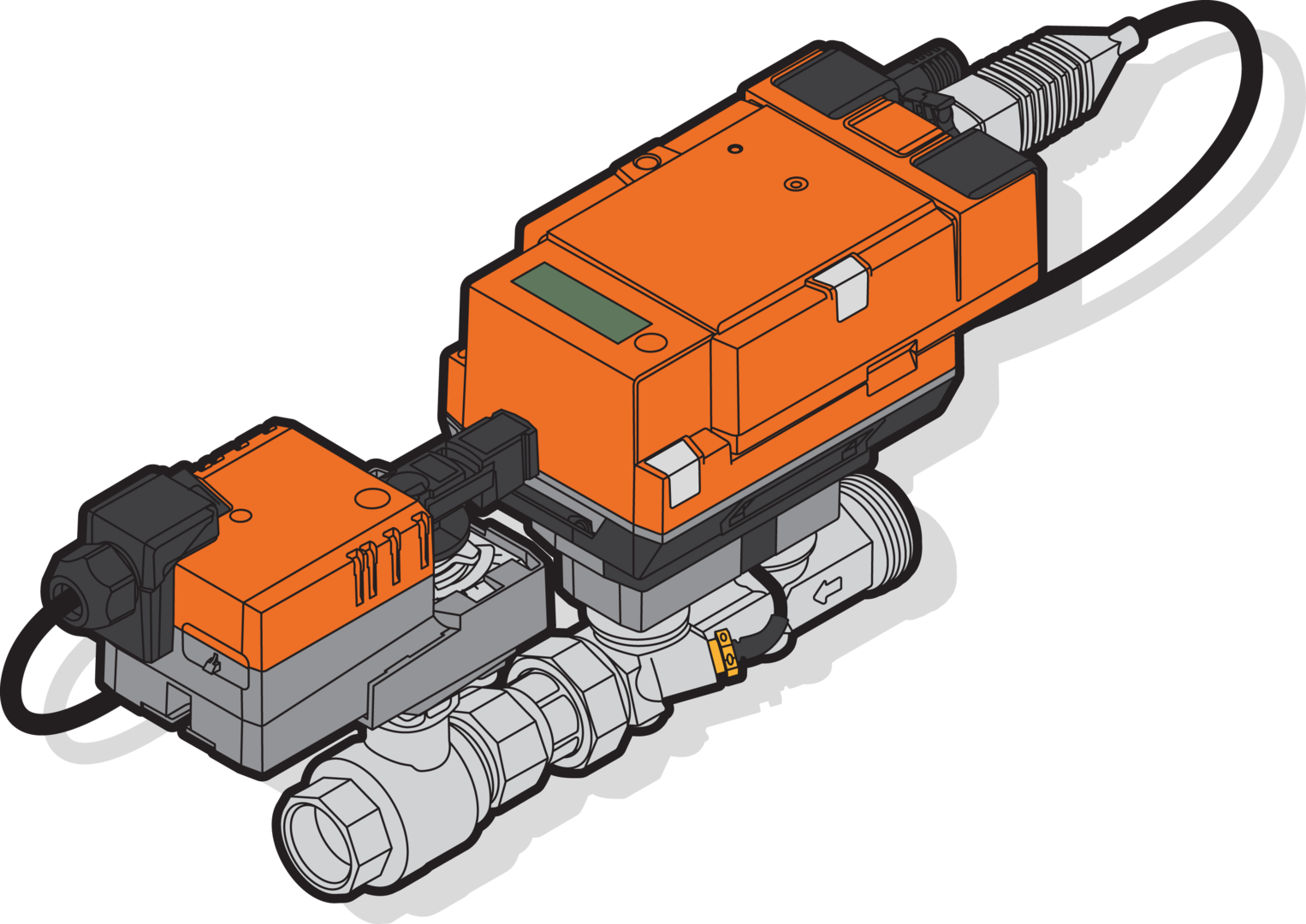
Situações comuns em sistemas de transição de dois tubos e como a Belimo Energy Valve™ as soluciona
Problem: Poor performance in heating mode
Heat exchangers or coils are typically selected on cooling loads, meaning that if the water medium is simply switched from cold to warm, the design flow rates are no longer suitable. For example, a typical cooling delta T would be 7 K, while you would expect a heating delta T of at least twice that.
Solution: Adjustable flow rates for heating/cooling season
As an intelligent valve is capable of high level communication with the BMS, flow rates can be updated remotely. This allows a change in design flow rates to be applied so that the valve is always controlling to the optimum flow rate.
Problem: Low delta T syndrome
As the heat exchanger is not only experiencing a change in water temperature, it could be experiencing a change in air volume in line with the new mode. With multiple variables of the heat exchange fluctuating, it now becomes virtually impossible to completely predict the correct flow rate over the range of permitted flows.
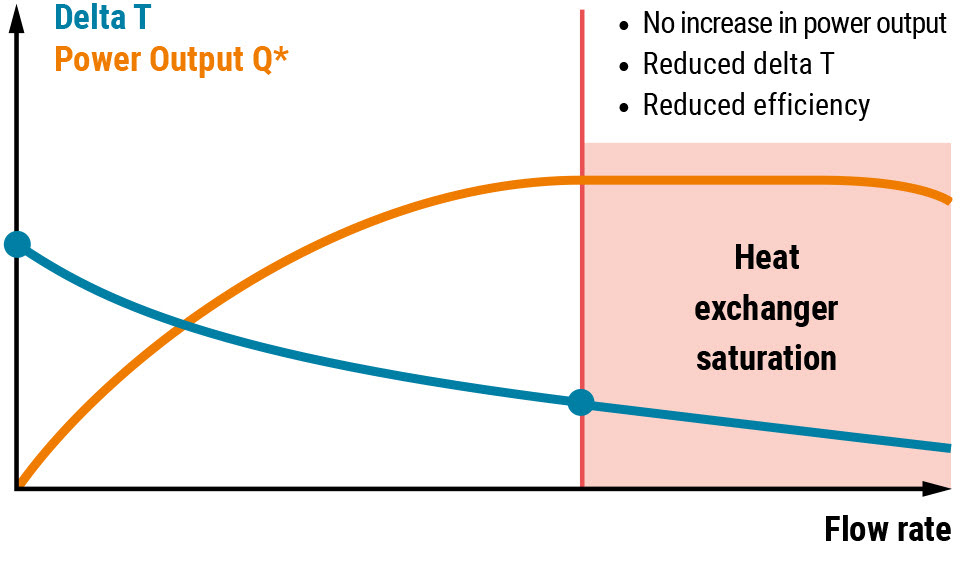
Solution: Energy Valve using the Delta T Manager
The Delta T Manager, integrated in the Belimo Energy Valve™, is a function that continuously measures the temperature spread and compares it with the systemspecific limiting value. If it falls below this, the Belimo Energy Valve™ automatically adjusts the flow so that only the amount of water actually needed is allowed through the heat exchanger. It is possible to update the required delta T using the bus interface, as easily as the water flows, giving you complete control.
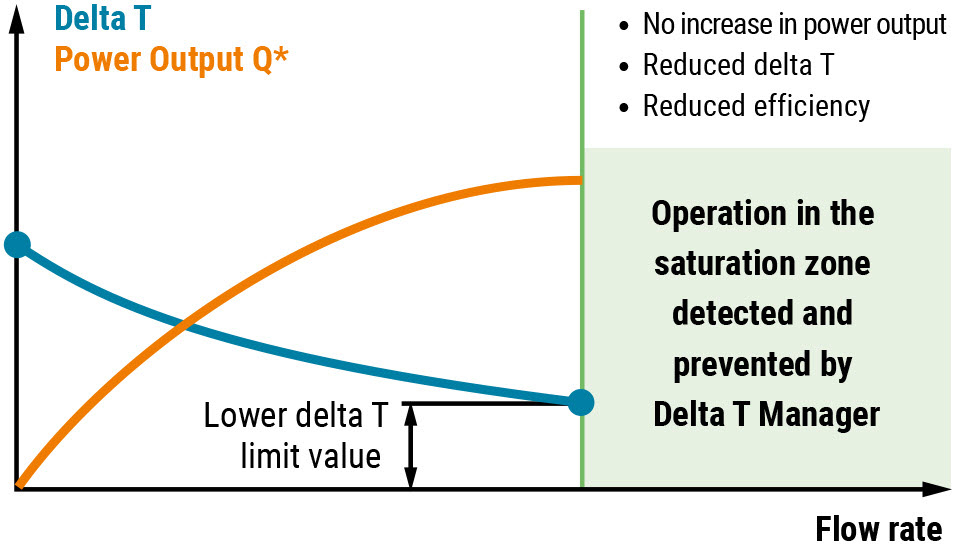
Dica profissional
A Energy Valve também registrará o uso de energia de aquecimento e resfriamento separadamente, portanto, em vez de comprar dois medidores, um para aquecimento e outro para resfriamento, agora é necessário apenas um único dispositivo!
Exemplo de aplicação
The example shown in the figure depicts a traditional setup with a flow rate of 0.11 l/s [1.74 GPM], based on the required cooling power, given inlet temperatures 6 °C [43 °F] and outlet temperature 12 °C [54 °F]. The heating flow rate required for the space is 0.05 l/s [0.79 GPM]. However, the system is set to deliver 0.11 l/s [1.74 GPM]. As a result, the heating performance is largely on/off.
This works to a degree, but the poor delta T experienced during the heating phase typically makes this setup incompatible with condensing boilers, because the return temperatures are too high for them to condense. As the heat exchanger is given the same fl ow rate of 0.11 l/s [1.74 GPM] when heating, the water is unable to give up sufficient energy to air, resulting in high return water temperatures or low delta T, as shown in fi gure 106.
As there are no PI valves fi tted to this solution, we still suffer with all the cross pressure fl uctuations typically seen with non-PI valve setups. This worsens the delta T further.

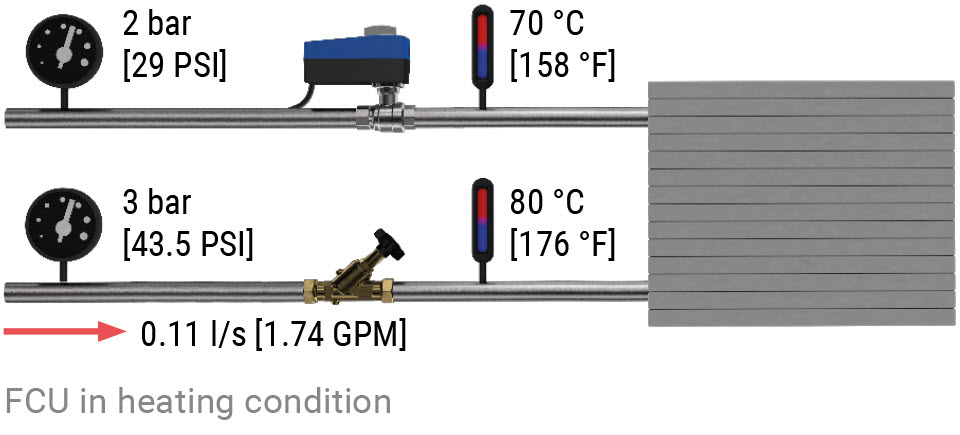
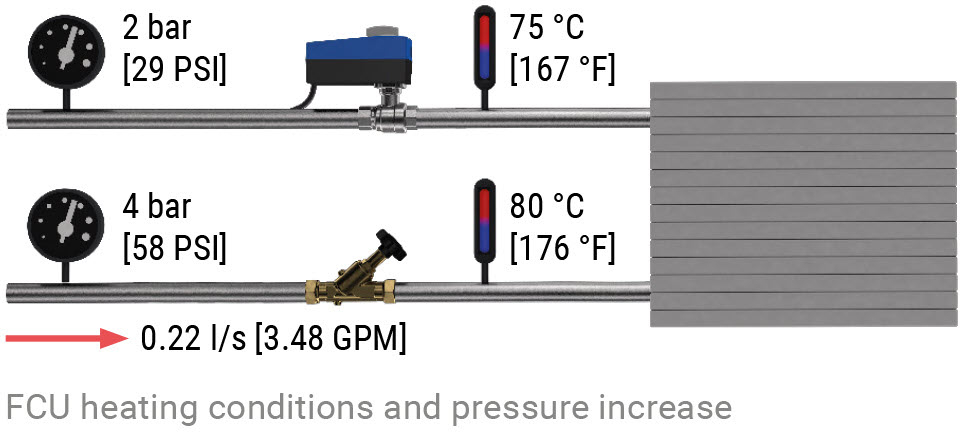
With the Energy Valve being updated with heating flow rates and delta T, the valve switches to 0.05 l/s [0.79 GPM] and enforces a minimum delta T of 30 K. Doing so, now allows the use of condensing boilers on the project, as the return water temperatures can be assured.
